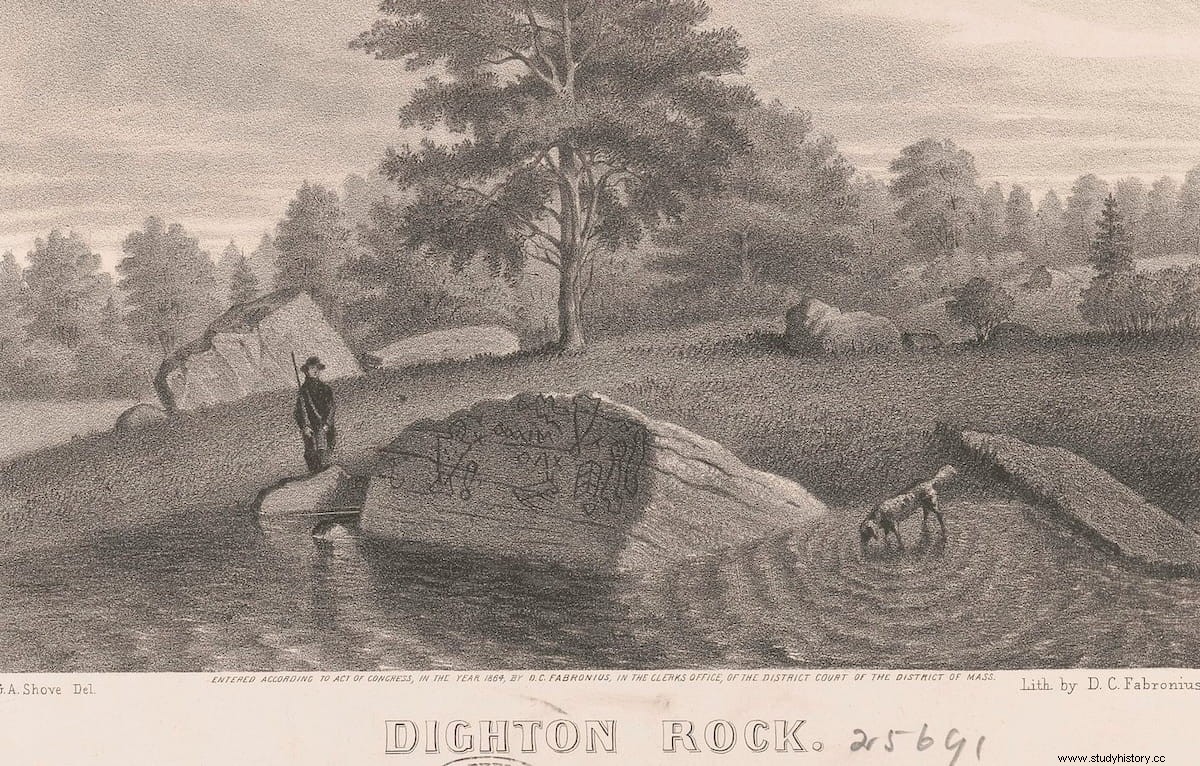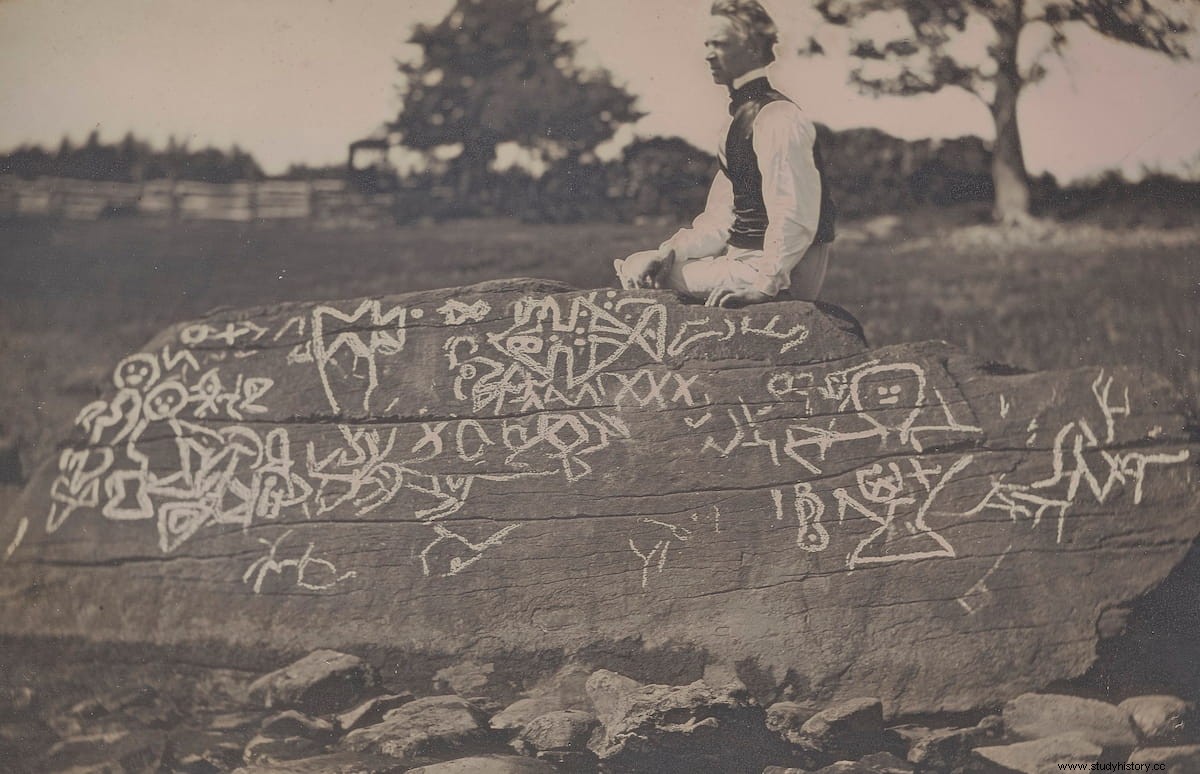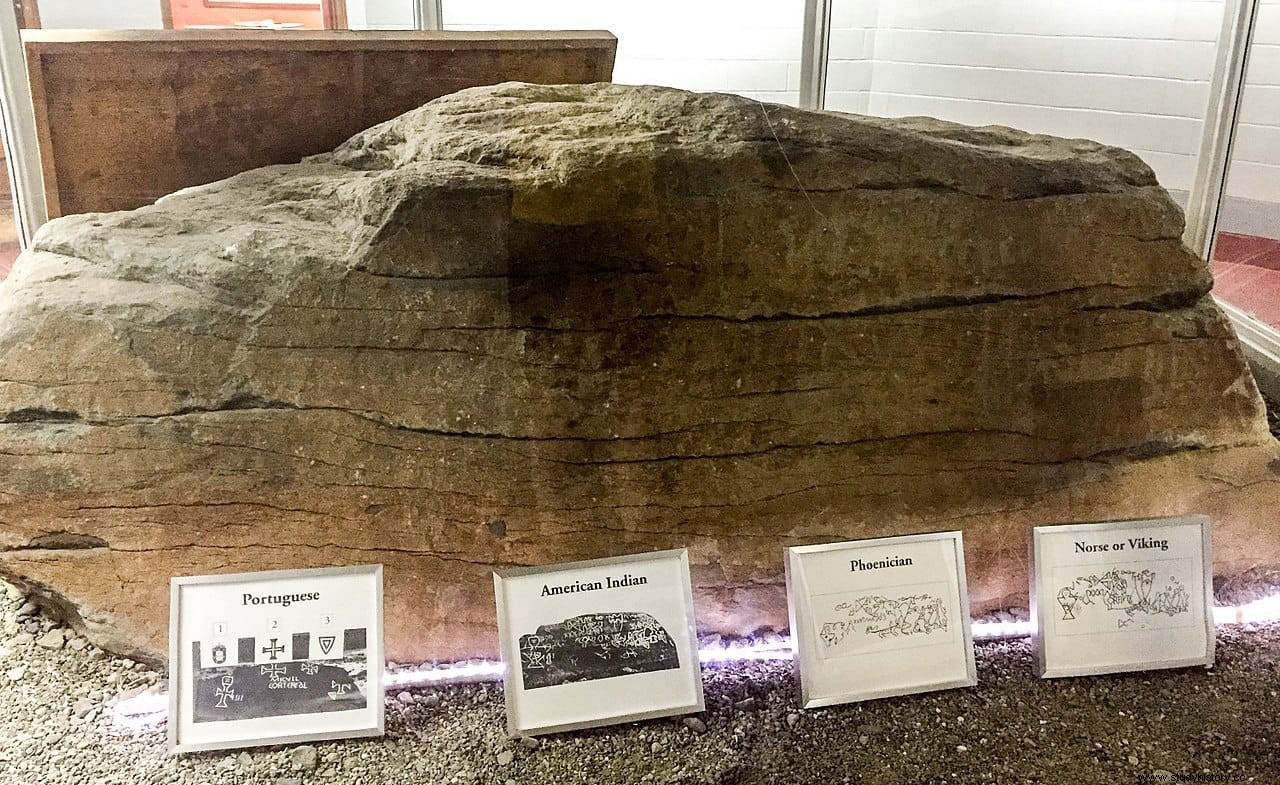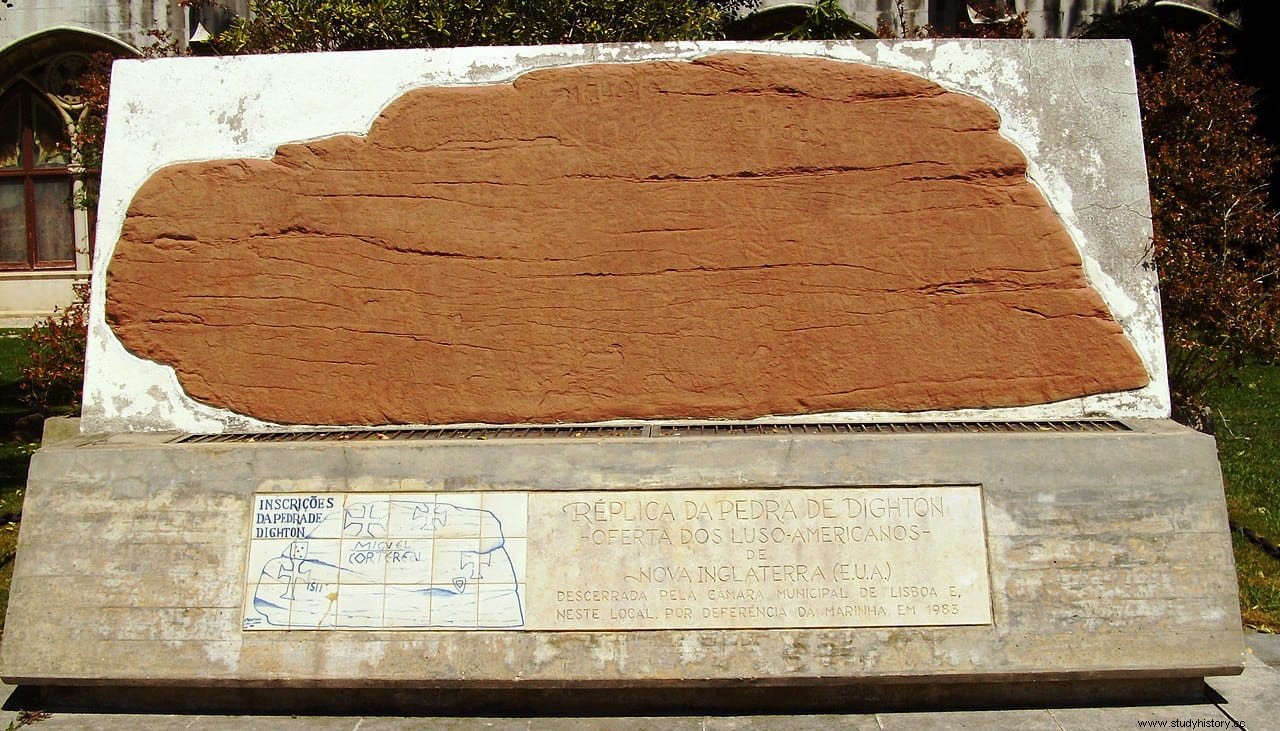On the banks of the Taunton River in Berkley, Massachusetts, there is a small museum with a unique but huge exhibit:a 40-ton rock that was dug out of the river bed and installed here in 1963:the famous Dighton Rock, named after it. from the ancient town of Dighton, where it was found.
For centuries it was on the riverbank, but the construction of a dam in 1963 forced it to be removed to safeguard it. The rock's fame lies in the indecipherable inscriptions carved into its face that have baffled scholars since the 17th century. The petroglyphs, made up mostly of straight lines and geometric shapes, are accompanied by very basic drawings of people along with what appears to be writing. They look like random doodles made by people who had nothing better to do, but people are convinced they're hiding a secret message.
Dighton's Rock is approximately 1.5 meters high, 9.5 meters wide and 11 meters long. The inscribed surface is sloping and once faced the sea, where it could be seen by any approaching ship or ship. For this reason, over the centuries it was speculated that the carvings were a message left by visitors to the coast, intended to attract the attention of later maritime explorers who passed by.

One of the earliest mentions of Dighton Rock is in 1680, when the English settler Rev. John Danforth made a drawing of the petroglyphs, which has been preserved in the British Museum. However, Danforth's drawing conflicts with other reports of the rock from a similar time.
In 1690, Reverend Cotton Mather described the rock in his book The Wonderful Works of God Commemorated (The wonderful works of God commemorated):

During the 19th century many popular publications and public figures mentioned the rock. Poet and critic James Russell Lowell suggested that presidential candidates mention it in their letters to newspapers:"If letters are to be written, profitable use might be made of Dighton's rock hieroglyph or cuneiform, each new decryptor might find a different meaning «. Lowell made other references to the rock in his widely circulated satirical writings, so he may have helped popularize it.
Different theories
One of the most influential theories was put forward in 1837 by a Danish scholar, Carl Christian Rafn, who suggested that the carvings had been made by Vikings and represented the Norse saga of Thorfinn Karlselne and his journey up the North American coast to a place called Hop , where his wife Gudrida gave birth to their son Snorro.

Rafn's theory piqued the interest of the Rhode Island Historical Society, who contacted his friends in Denmark, and together they found enough evidence to declare that Hop was in the Taunton River.
Rafn's research aroused international enthusiasm, and from 1837, the theory of pre-Columbian explorations of North America by the Vikings was almost universally accepted. Dighton Rock was the last link in a long chain of evidence.
Unfortunately, the Viking rock theory was shattered in 1916 by the late Professor Edmund B. Delabarre of Brown University. Delabarre found large discrepancies between the actual drawings of the society and the retouched copies reproduced in Rafn's book. Apparently, Rafn had added many lines to the drawings to support his theory.

Studying the inscription, Delabarre found what appeared to be the name "Miguel Corte-Real » and the date of 1511 scrawled between the lines and marks. Delebarre stated that the message is an abbreviated Latin in the Portuguese style, which can be translated as «I, Miguel Corte-Real, 1511. In this place, by the will of God, I became cacique of the Indians «.
But who was Miguel Corte-Real?
Miguel Corte-Real was a Portuguese explorer who set out from Lisbon in 1502 in search of his brother Gaspar, who had been lost two years earlier near Newfoundland. The expedition apparently reached the spot where Gaspar's party had landed, at which point the three ships parted in different directions to search.
Later, the ship carrying Miguel did not appear at the designated rendezvous point. The other two boats undertook the trip back to Portugal, while Miguel and his boat were never seen again.

Delabarre speculated that Miguel Corte-Real reached the bay of Mount Esperanza in 1502 and sent his men ashore near the site of Dighton Rock. Perhaps there was a battle with the Wampanoag Indians, perhaps a shipwreck, or perhaps for other reasons Miguel joined the Wampanoags.
Corte-Real lived with the Wampanoag for several years keeping a close eye on ships off the coast. But in 1511, when hopes of rescuing him faded, he carved the message into the rock, where he would remain for future generations.

Delabarre's theory is widely accepted in Portugal, but not so much in other countries. American historian Samuel Eliot Morison criticized it harshly in his 1971 book The European Discovery of America:The Northern Voyages .
Other theories have attributed these carvings to the Phoenicians and even the Chinese, who according to author Gavin Menzies sailed to America before Columbus.
Dighton Rock remains the subject of endless debate among scholars, but it doesn't attract many tourists to Dighton Rock State Park, purchased by the state in 1955. Its petroglyphs remain undeciphered.
This article was published in Amusing Planet. Translated from English and published with permission.
